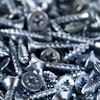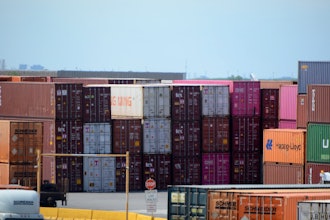WASHINGTON (AP) — The United States is selling fewer products around the world and spending more on cheap imported goods, an imbalance that hurts the job market at home and means the economy is even weaker than previously thought.
The trade deficit of nearly $50 billion for June is the biggest in almost two years, and economists fear that economic growth for the second quarter, which came in at a sluggish rate of 2.4 percent in early estimates, may turn out to be only half that.
"The problem is that to the extent we have a recovery in the United States, it is pulling in a lot of imported goods. That means it is not translating into production and jobs at home," said Nigel Gault, chief U.S. economist at IHS Global Insight.
Exports for June were down 1.3 percent, to $150.5 billion, the Commerce Department reported Wednesday. At the same time, imports rose 3 percent, to just over $200 billion.
Overall, the trade deficit grew by 19 percent for the month.
The manufacturing sector has been a bright spot in an otherwise sluggish recovery, and if manufacturers have a hard time finding places to sell their products overseas, it could weaken the broader economy.
While U.S. manufacturers have reported increased demand from Asia, exports to Europe are falling behind as that region of the world struggles with fallout from its debt crisis. The deficit with the European Union alone increased 26 percent.
The trade figures show the United States can't rely on demand overseas to make up for its own weak economy at home, said Paul Dales, U.S. economist at Capital Economics, another forecasting firm.
The ballooning trade deficit added to a rough day on Wall Street. The Dow Jones industrial average fell more than 260 points, or 2.5 percent. Investors were also digesting a gloomy economic outlook from the Federal Reserve a day earlier.
President Barack Obama gave the manufacturing industry a little help Wednesday. The president signed legislation that would reduce and suspend tariffs on certain materials U.S. companies must import to make their products. That could make U.S. products cheaper overseas.
In addition to the troubles in Europe, manufacturers have to contend with businesses that have replenished their stocks and can afford to cut back their orders. That is a problem both around the globe and at home.
The trend can be found in the technology sector, where computer makers moved quickly after the recession to build up inventories of chips.
Intel Corp., the world's biggest semiconductor company, booked its biggest quarterly profit in a decade in the second quarter. But many analysts are seeing signs that computer makers cut their orders for new machines late this summer.
J.P. Morgan analyst Christopher Danely warned investors this week that PC orders are "falling off a cliff." Austerity measures in Europe, tightened spending in China and the waning of stimulus spending in the U.S. are all hurting demand.
That helps explain why semiconductor exports, which are up $6.5 billion for the year, were down $318 million in June, and why exports of computers, which are up $1 billion for the year, were down $220 million in June.
Boeing, the world's largest aircraft manufacturer, says its orders rose sharply from last year, and U.S. airlines are reporting profits. But airlines are still spending cautiously.
A major problem for U.S. manufacturers is the rise in value for the dollar against some foreign currencies. On Wednesday, the dollar surged against many currencies around the world. A stronger dollar makes U.S. goods more expensive overseas while at the same time making foreign products cheaper for American consumers.
At the same time, China has refused to heed the Obama administration's demands that it allow its currency to rise in value against the dollar. A weaker dollar against the yuan would make American products more competitive in China while making Chinese goods more expensive in the United States.
The U.S. trade deficit with China jumped to $26.2 billion in June, a 17.4 percent increase from May and the largest one-month gap since October 2008. It is likely to increase pressure on Congress to pass legislation that would impose trade sanctions on Chinese imports unless the country moves more quickly to allow its currency to rise in value against the dollar.
American manufacturers contend the Chinese currency is undervalued by as much as 40 percent, making U.S. products more expensive in China and Chinese goods cheaper in the United States. Still, in a recent report the Obama administration declined to cite China as a currency manipulator, a designation that could lead to trade sanctions.
"The White House strategy of giving China the benefit of the doubt on currency has fallen short," said Scott Paul, the executive director of the Alliance for American Manufacturing. "The House and the Senate must now step in and pass strong legislation to penalize China's currency manipulation and bring down our trade deficit."


















